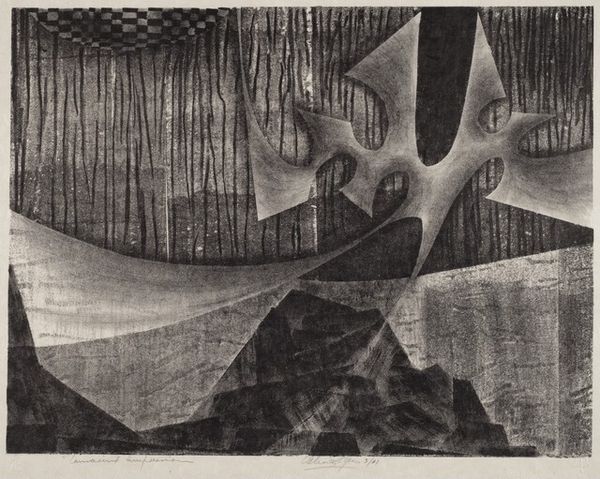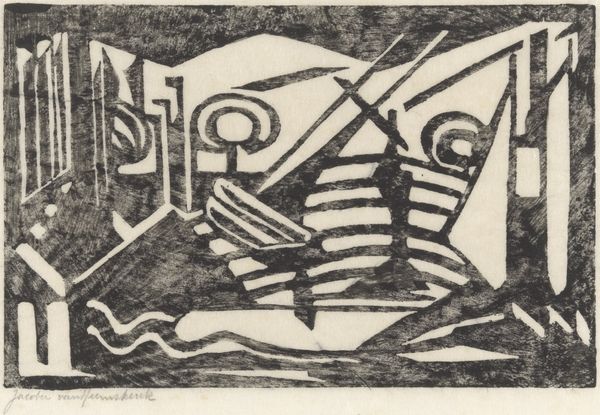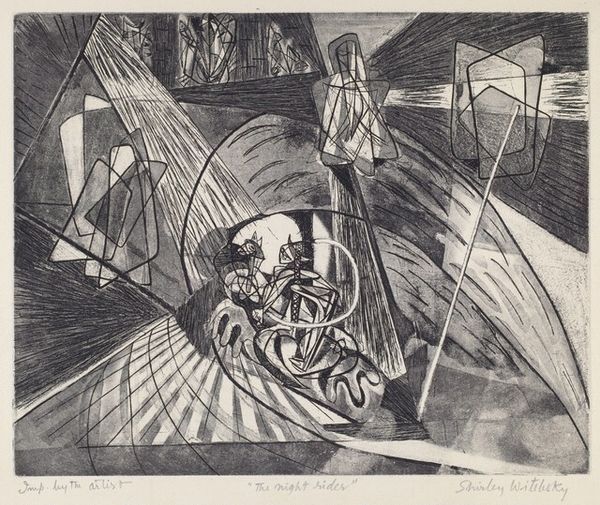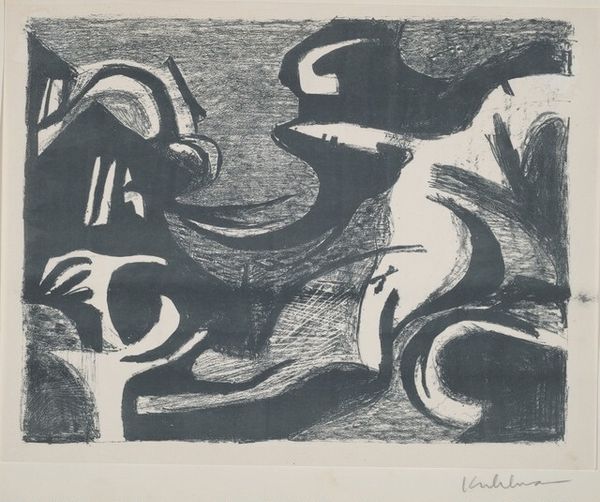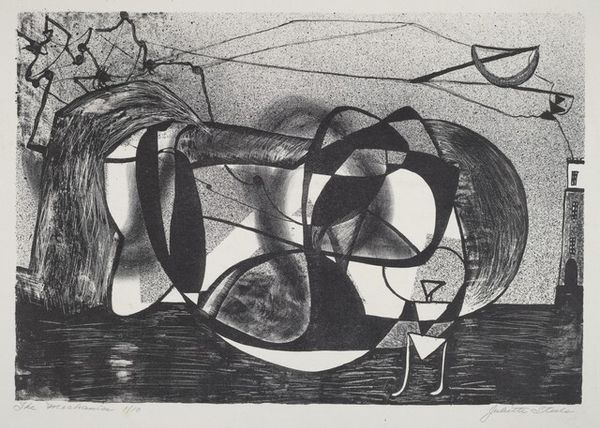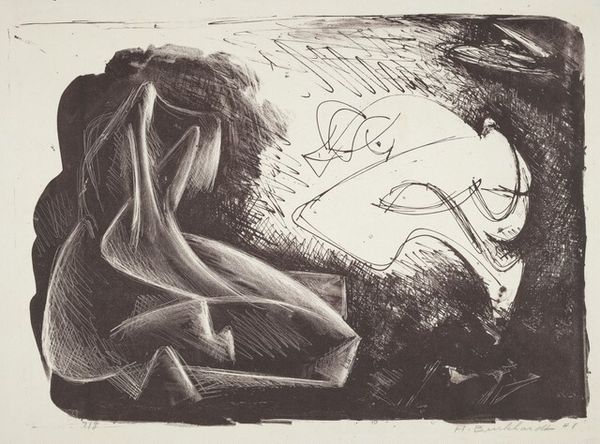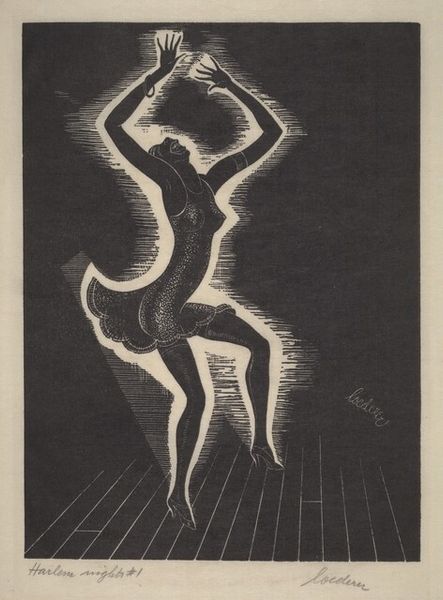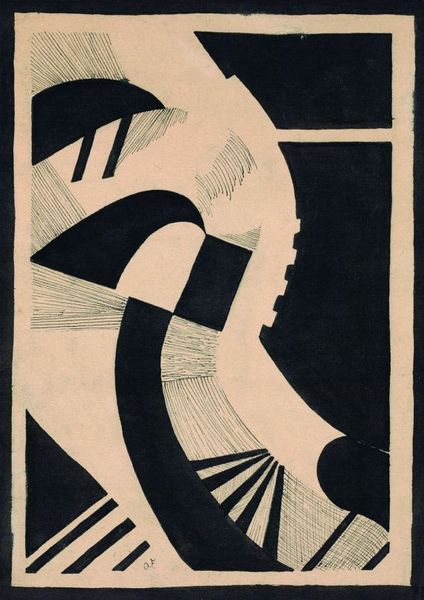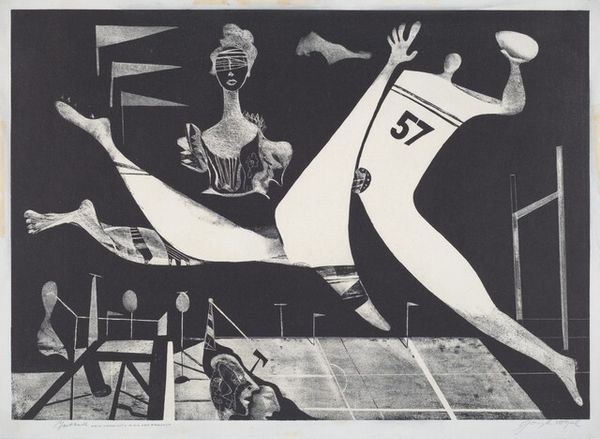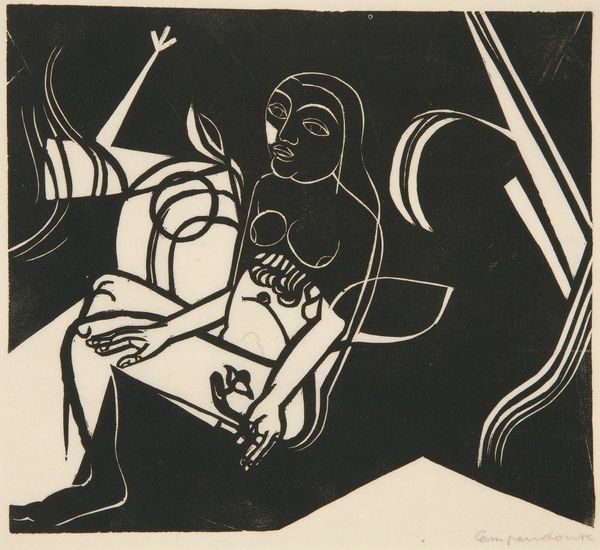
# print
#
landscape
#
geometric
#
abstraction
#
surrealism
Dimensions: image: 166 x 320 mm sheet: 316 x 429 mm
Copyright: National Gallery of Art: CC0 1.0
Editor: This is Julio De Diego's "Untitled (Surrealist Landscape)," a print made sometime between 1930 and 1932. It’s stark and strange, almost like a stage set for a bizarre play. I'm drawn to the textures; it feels very handmade. What jumps out to you? Curator: Immediately, I notice the contrast between the seemingly haphazard arrangement of objects in the foreground and the precisely rendered landscape in the back. It speaks to the tension inherent in printmaking – the deliberate planning required versus the potential for accidental marks or variations. I wonder, how does this tension inform the social context of Surrealism itself, a movement grappling with industrialization and the changing landscape of artistic production? Editor: That’s fascinating! I hadn't considered the printing process as integral to its meaning. So you’re suggesting the *way* it's made reflects some deeper themes about labor and mechanization at the time? Curator: Precisely. Consider the labor involved in creating a print, the repetitive motions, the reliance on a machine to reproduce the image. How might De Diego be subtly commenting on the shift from handcrafted goods to mass-produced commodities through his deliberate use of this medium? Notice, for instance, how even the natural elements – the mountains, the bare tree – appear almost machine-tooled, echoing the geometric shapes in the foreground. Editor: The mountains almost look stamped, now that you mention it. I see what you mean. So the choice of printmaking is almost a political statement within this surreal dreamscape? Curator: It certainly could be. And further, let's not disregard the distribution capabilities of prints. Did it allow the artist to more efficiently engage with their contemporary context? In what venues would prints be seen, and how would this impact its consumption? This approach complicates our reading of the landscape itself – it’s not just a pretty picture, but a landscape shaped by the forces of production. Editor: This gives me a completely new way of looking at the piece. I came in thinking about dreams, and now I’m considering industry. Curator: Art is never created in a vacuum, and considering the materials and production process adds another crucial layer to our understanding. The artist, too, is another cog in that wheel.
Comments
No comments
Be the first to comment and join the conversation on the ultimate creative platform.
